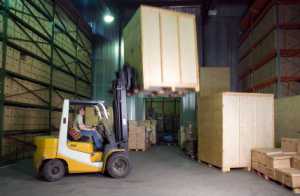A buyers guide to forklifts
Buying a new forklift is not something which should be taken lightly, it’s an expensive and potentially dangerous piece of machinery. So when you consider buying a new forklift truck you need to make sure you’re getting the right one for your purposes and for your site.
In this article we have put together a buyer’s guide for forklifts, detailing which things you need to take into consideration when purchasing a forklift. Previously, we detailed different kinds of forklifts and their application, to refresh your memory and ensure you know what each forklift is, use this handy guide.
How High Does It Need To Reach?
You can cut down the amount of time you spend looking by deciding how high you need your forklift to reach. If you only want to access goods on lorries and transport heavy loads around a warehouse at a low height then a standard reach is going to have more than enough height on the forks.
If, however, you need to reach items high up on shelving – let’s say anything over 8 metres – then it’s clear your will need something more like an industrial reach forklift. The mast size is something which should also be factored in if you have small, low ceiling premises as you don’t want to break your ceiling or cause injury to workers.
What Kind Of Maneuverability Do You Need?
If your premises have very little room for moving around already, then you might need something with a better turning circle, such as a three-wheeled counterbalance truck; although you’d be sacrificing some of the maximum weight capacity.
A four-wheeled forklift won’t have quite as tight a turning circle, but can be used over a slightly rougher terrain due to a better spread balance. It also has a firmer base to lift heavier loads.
Should It Be New Or Old?
Many businesses will be on a tight budget and looking to make savings – this can apply to your forklift if you buy a second hand model. This is cheaper than a brand new forklift, but you should consider how much you need to use a forklift and whether the repair costs over its lifespan will cancel out any savings you made on an old truck.
If you can find a second hand truck which has been kept in good condition, then this might not be such a huge problem, although you should consider the fact that any second hand forklift will have some cosmetic damage.
Which Fuel Suits You?
There are three main groups when it comes to fuel types:
Electric – uses a large battery and can be used both indoors and outdoors
LPG – internal combustion but can be used indoors if there is sufficient ventilation
Diesel – cannot be used indoors at all
Of the three, electric forklifts cost less to operate, however, they do cost more to buy in the first place and can’t take continuous use as they need to be charged over a break period.
Hopefully this article has given you some factors that you can take into consideration when it comes to choosing a particular type of forklift. For all your forklift training needs – no matter what type of forklift – contact Euro 1 Training today and we’ll provide you with the right training course for you or your team.
